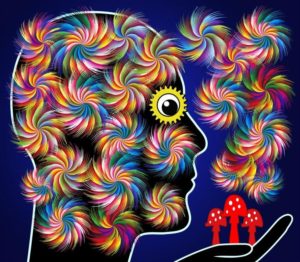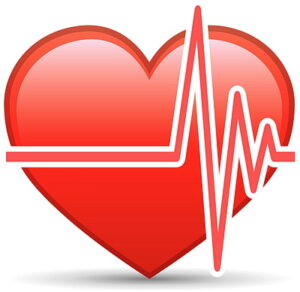 Americans have been increasing their dosage and intake of antidepressants like Prozac, Celexa, and Effexol just to name a few. According to a study conducted by the National Center for Health Statistics, the rate of antidepressants has increased exponentially among adults and teens (individuals aged 12 and over) alike. The study documented an almost 400% increase between 1988 to 1995 and 2005 to 2008.
Americans have been increasing their dosage and intake of antidepressants like Prozac, Celexa, and Effexol just to name a few. According to a study conducted by the National Center for Health Statistics, the rate of antidepressants has increased exponentially among adults and teens (individuals aged 12 and over) alike. The study documented an almost 400% increase between 1988 to 1995 and 2005 to 2008.
Research undertaken by the federal government has found out that one in every ten Americans takes an antidepressant daily. This has made the drug the third most popular prescription medicine in the country.
What Do the Numbers Say?
The picture painted by further segregation and analysis of the statistics appears to be rather grim.
-
- 24% of women older than 40 years of age take antidepressants on a regular basis, the highest intake reported among any other age or gender category.
- 14% of whites, 4% of blacks, and 3% of Mexican Americans consume antidepressants.
- Less than a third of Americans who use the drug have seen a mental health professional over the course of a year.
- Differences in income do not reflect variability in antidepressant usage.
Why the Need for Concern
There is a consensus among mental health experts across the board that even though antidepressants may prove to be effective, they act as suppressors and do not address the underlying cause of the issue. Professionals believe that the benefits of antidepressants have been overstated in targeted marketing campaigns carried out by major pharmaceutical companies.
Common Side Effects
The most commonly prescribed antidepressants in the country are selective serotonin reuptake inhibitors (SSRIs). These include Prozac, Zoloft, Paxil, Lexapro, and Celexa. These medications are considered to be “safe” but come with side effects for some people.
Patients taking SSRIs suffer from insomnia, skin rashes, digestive issues, mood swings, nausea, and joint and muscle pain to name a few. The severity of these effects varies from patient to patient with some cases being mild, others severe or in between. A rather serious issue arises when blood clotting capacity diminishes. Patients are at high risk of internal bleeding.
Some patients consuming SSRIs suffer from reduced sexual desire, performance, satisfaction or a combination of all these side effects. Lowering the dosage of SSRIs might prevent this but could potentially reduce the drug’s benefit. Antidepressants may also lead to weight loss or gain, depending on the prescription.
If antidepressants are taken alongside other serotonin-affecting drugs, a rare illness termed serotonin syndrome can occur. This syndrome leads to faster heartbeats, sweating, high body temperature, and increased blood pressure. Antidepressants should most definitely not be mixed with certain other prescription drugs. A medical professional is required to determine the correct medicine and proper dosage for the patient.
Can Antidepressants Stop Being Effective?
Even after depression symptoms are alleviated, a patient might be required to continue taking the drug. This is done in order to prevent the mental issue from resurfacing in the future. However, for many patients, these drugs stop being effective after a while. Medical science has not been able to pinpoint the exact reason for this but there are some reasons that can lead to the drug being ineffective.
Severe depression. Depression, in most cases, does not occur overnight. Rather, it is a buildup which worsens if left untreated. Even if a person is currently taking antidepressants, depression may exacerbate depending on a number of factors such as family or workplace stress, social or financial issues to name a few. Beyond a certain point of depression, antidepressants may stop working and your current dose might not be enough.
Age factor. Depression tends to get worse with age in some cases. People who are elderly experience changes in cognitive processes. They also go through mood swings that become more frequent and severe. The prescribed medication starts to lose its efficiency or can completely stop working.
A new prescription drug. Some medications meant for unrelated medical conditions may hinder the effectiveness of antidepressants.
An addiction. People suffering from addiction problems generally tend to take more than their prescribed dosage. This leads to reduced efficiency of the drug and may stop being effective all together over time.
Increased Awareness
The increased level of antidepressant usage could be reduced by spreading more awareness about mental health issues. No doctor or patient wants to be reliant on prescription drugs to find a cure.
Times are turbulent and social media does little to quell people’s worries and fears. A changing political landscape, economic transitions, and the increased usage of technology to replace jobs are just some of the more macro issues that people have to deal with in addition to regular life problems.
There is consensus across the board that prevention is better than the cure. Alternate forms of treatment such as therapy or even talking to loved ones may keep mental issues at bay. In the end, lifestyle choices do play a major part in mental health problems.
Some lifestyle choices are not an option such as a highly stressful job, which significantly contributes to aggravating mental health problems. However, other choices are in our hands such as regular exercise and better diet control.
Surveys and studies have shown that people who eat better and live better are less vulnerable to be plagued by mental health problems. A daily habit of a 20 to 30-minute exercise can really do wonders for our physical and mental wellbeing. Even patients suffering from mental issues have been known to cope with the illness better through increased physical activity.
Bottom Line
Antidepressants aren’t for everybody, but many people do use them and, for the most part, with partial or substantial success. With that said, however, the recovery from depression when using medication doesn’t happen overnight. It may take weeks, months or sometimes even years. The reason is that there are so many variations of the illness that it sometimes requires the right mix of medications for the patient to achieve results. In addition, many people who take antidepressant medications also go to therapy. But it all starts with a visit to your doctor where he/she will determine the next steps to follow.

 Medical science, with all its innovations and advancements, has still not managed to tackle the underlying causes behind mental health issues. Surely, elements such as trauma and high stress have been identified as causation factors but doctors still have not been able to identify the root cause behind mental problems.
Medical science, with all its innovations and advancements, has still not managed to tackle the underlying causes behind mental health issues. Surely, elements such as trauma and high stress have been identified as causation factors but doctors still have not been able to identify the root cause behind mental problems.

 Depression can be described as a mood disorder. It may be classified as feelings of sadness, loss, anger or disappointment that impair a person’s day to day activities. The
Depression can be described as a mood disorder. It may be classified as feelings of sadness, loss, anger or disappointment that impair a person’s day to day activities. The  What is Processed Meat?
What is Processed Meat? Fresh meat consists of proteins, fats, and water. When the meat is processed, the components change, which in turn transform how the meat is digested and assimilated in our bodies.
Fresh meat consists of proteins, fats, and water. When the meat is processed, the components change, which in turn transform how the meat is digested and assimilated in our bodies.  Certain chemicals such as N-Nitroso compounds and polycyclic hydrocarbons, which are carcinogenic in nature, are produced during the production of processed meats. Cooking processed meats also produces heterocyclic aromatic amines as well as polycyclic aromatic hydrocarbons which are found in air pollution. Furthermore, nitrite and nitrate preservatives used to increase the shelf life of processed meats also release chemicals upon digestion that can lead to bowel cancer.
Certain chemicals such as N-Nitroso compounds and polycyclic hydrocarbons, which are carcinogenic in nature, are produced during the production of processed meats. Cooking processed meats also produces heterocyclic aromatic amines as well as polycyclic aromatic hydrocarbons which are found in air pollution. Furthermore, nitrite and nitrate preservatives used to increase the shelf life of processed meats also release chemicals upon digestion that can lead to bowel cancer. 




 Longtime use of marijuana can affect the musculoskeletal system as well. Researchers at The University of Edinburgh, UK have found out that people who regularly use marijuana experience deterioration of bone density that disturbs their BMI. They also found out that it can lead to the development of the chronic condition of Osteoporosis in the later stages of life.
Longtime use of marijuana can affect the musculoskeletal system as well. Researchers at The University of Edinburgh, UK have found out that people who regularly use marijuana experience deterioration of bone density that disturbs their BMI. They also found out that it can lead to the development of the chronic condition of Osteoporosis in the later stages of life. Several research studies have shown that the use of marijuana by women during pregnancy can affect the cognitive development of the child in the womb. Newborn children can face many problems throughout life due to marijuana consumption by mothers during pregnancy.
Several research studies have shown that the use of marijuana by women during pregnancy can affect the cognitive development of the child in the womb. Newborn children can face many problems throughout life due to marijuana consumption by mothers during pregnancy.

 June 27th is National PTSD awareness day. While there is still a general lack of understanding of
June 27th is National PTSD awareness day. While there is still a general lack of understanding of